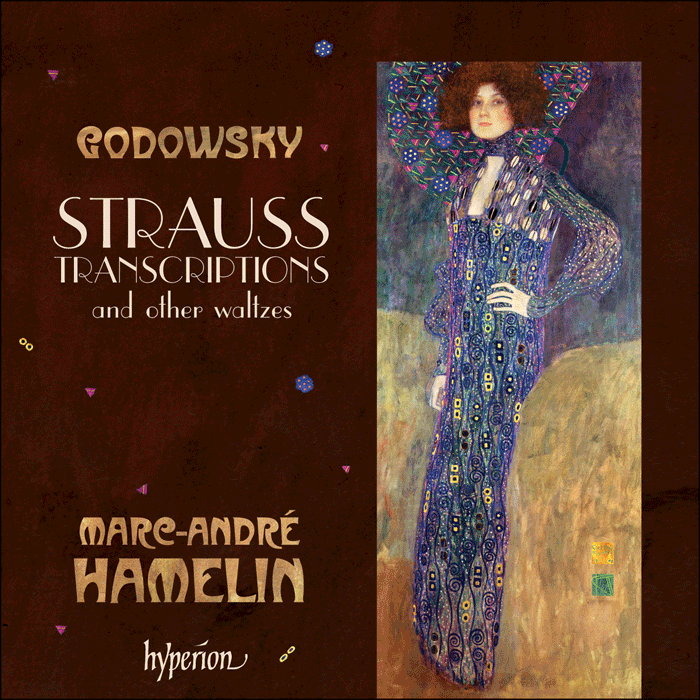Logowanie
Mikołaj - ten to ma gest!
Miles Davis, Horace Silver, Jay Jay Johnson, Percy Heath, Kenny Clarke, Lucky Thompson
Walkin'
20bit K2Super Coding - ale jak to brzmi!
Kasety magnetofonowe
Winylowy niezbędnik
ClearAudio
Double Matrix Professional - Sonic
najbardziej inteligentna i skuteczna pralka do płyt winylowych wszelkiego typu - całkowicie automatyczna
GODOWSKY, Marc-Andre Hamelin
Strauss transcriptions and other waltzes
- Symphonische Metamorphosen Johann Strauss’scher Themen Leopold Godowsky (1870-1938) & Johann II Strauss (1825-1899)
- 1 No 1: Künstlerleben [14:55]
- Walzermasken Leopold Godowsky (1870-1938)
- 2 No 02: Pastell [2:05]
- 3 No 14: Französisch [2:42]
- 4 No 22: Wienerisch [2:56]
- 5 No 24: Portrait—Joh. Str. [6:02]
- Symphonische Metamorphosen Johann Strauss’scher Themen Leopold Godowsky (1870-1938) & Johann II Strauss (1825-1899)
- 6 No 2: Die Fledermaus [11:04]
- Triakontameron Leopold Godowsky (1870-1938)
- 7 No 04: Rendezvous [2:46]
- 8 No 11: Alt Wien [2:39]
- 9 No 13: Terpsichorean Vindobona [2:09]
- 10 No 21: The Salon [3:02]
- 11 No 25: Memories [3:48]
- Symphonische Metamorphosen Johann Strauss’scher Themen Leopold Godowsky (1870-1938) & Johann II Strauss (1825-1899)
- 12 No 3: Wein, Weib und Gesang [12:02]
- Die letzte Walzer Oscar Straus (1870-1954) & Leopold Godowsky (1870-1938)
- 13 Theme: Waltz [2:33]
- Marc-Andre Hamelin - piano
- GODOWSKY
'Marc-André Hamelin, it hardly needs saying, is precisely the pianist for this music … No-one since Godowsky's son-in-law, David Saperton, has played it with such discernment; and not even Saperton had Hamelin's technical command or his variety of timbre, touch and mood … Bravura handled with exquisite tact. If you are looking for an example of pianistic grace under fire, you won't find anything better … All in all, a caviare release' (International Record Review) --------------------------------- Marc-André Hamelin’s programme is mostly devoted to Godowsky’s works based on themes by—or directly inspired by—Johann Strauss II. It is not intended to be a comprehensive survey but is, nevertheless, fully representative of Godowsky’s finest reflections on the Waltz King. In the three great Strauss transcriptions, Godowsky elevated the art of the piano paraphrase to a higher musical and pianistic plane; however their extreme technical difficulty remains a striking feature and places them out of the reach of ordinary pianists. And Marc-André Hamelin is, of course, no ordinary pianist—in fact his playing on a recent disc (see below) was compared to that of Alkan and Liszt. Triakontameron and Walzermasken are rarely performed examples of Godowsky’s original work, and continue the composer’s love-affair with the waltz—they are written entirely in 3/4 time. The last work on this dazzling disc is an oddity—indeed, a rarity. Sometime prior to 1925, Godowsky made a piano roll of his arrangement of The Last Waltz by Oscar Straus (1870–1954), the Vienna-born composer. The eponymous Waltz is heard throughout the 1920 operetta. The music of Godowsky’s transcription was never published for some unknown reason—it is a uniquely appealing arrangement. In the early 1970s, Gilles Hamelin, the pianophile father of Marc-André, notated, arranged and edited The Last Waltz from Godowsky’s piano roll, which was then published in 1975. Shortly afterwards, a copy of the negative of Godowsky’s manuscript was sent to Gilles Hamelin. It was all but illegible, so Hamelin Snr. made a fair copy in his own hand: in almost every respect it tallied with the version he had transcribed from the piano roll.






























